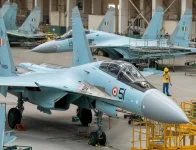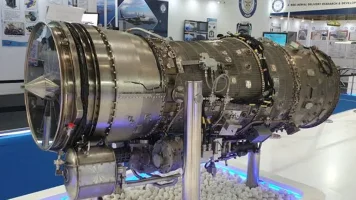- Views: 1K
- Replies: 4
Hindustan Aeronautics Limited (HAL) is reportedly considering the original French-Russian PowerJet SaM146 engine for the Sukhoi Superjet 100 (SJ-100) aircraft it plans to produce in India.
This strategic move would diverge from Russia's current "Russified" version of the jet, which uses the new, domestically-produced PD-8 engine.
Sources suggest this decision is aimed at making the aircraft a more reliable and attractive option for India's private airlines, which are often cautious about adopting unproven technology developed as a result of Western sanctions on Moscow.
This development follows a significant Memorandum of Understanding (MoU) signed in Moscow on October 27, 2025.
The agreement between the Indian state-owned aerospace firm and Russia's United Aircraft Corporation (UAC) grants HAL exclusive rights to assemble and manufacture the twin-engine, 75- to 100-seat regional jet for the Indian market.
This deal is a major milestone, marking India's first full-scale production of a civilian jet since the Avro HS-748 program, which ended in 1988.
The SJ-100, also known as the Yakovlev SJ-100, is seen as a potential lifeline for India's UDAN regional connectivity scheme. With a flight range of 2,200 to 2,600 nautical miles, the aircraft is well-suited for short-haul routes connecting India's tier-2 and tier-3 cities.
Market estimates project a domestic need for at least 200 such aircraft, with potential demand for another 350 units from neighboring Indian Ocean rim nations.
Engine Choice at the Core of the Strategy
The central issue is the aircraft's powerplant. The original Superjet 100, of which over 200 are in operation globally, used the PowerJet SaM146 turbofan.This engine is a product of a 50-50 joint venture between France's Safran Aircraft Engines (formerly Snecma) and Russia's NPO Saturn. It is a well-established engine, with its core design based on the highly successful CFM56, and is certified for a thrust of 17,000 to 18,000 pounds.
Following international sanctions in 2022, Russia accelerated its "import substitution" program to remove Western components. This resulted in the PD-8 engine, a new, all-Russian powerplant developed by UEC Saturn. This engine powers the "Russified" SJ-100, which also features Russian-made avionics and landing gear.
While the PD-8 is in the final stages of certification, having completed over 4,000 hours of test flights, it does not yet have a commercial service record.
Sources indicate that the Indian-built variant will "stick with the SaM146 to make it more attractive to local carriers." By opting for the proven French-Russian engine, HAL would ensure a stable supply chain for spares, a mature maintenance (MRO) ecosystem, and global interoperability.
This is a critical factor for airlines like IndiGo and Air India, which operate large, Western-made fleets and prioritize reliability.
This decision would sidestep the "teething risks" associated with a new engine.
By leveraging the SaM146's established track record of over 1.5 million flight hours, HAL aims to offer a reliable aircraft with lower operational costs. Localised assembly could potentially reduce the aircraft's price by 20-30% compared to rivals like the Embraer E-Jet or ATR-72, making it highly competitive for low-density routes.
A 'Make in India' Boost with Dual-Use Potential
Defence Minister Rajnath Singh has praised the MoU as a "major stride towards Aatmanirbharta" (self-reliance) in the civil aviation sector.The project is expected to channel 50-70% of component manufacturing to domestic suppliers, including Tata Advanced Systems, Mahindra Aerospace, and Larsen & Toubro.
Production is likely to take place at HAL's established facilities in Nashik or its Transport Aircraft Division (TAD) in Kanpur, which built the Avro HS-748. The timeline aims for prototypes to fly by 2028 and for deliveries to begin by 2030, aligning with the expansion of the UDAN scheme.
Despite the optimism, some observers remain cautious, recalling past Indo-Russian defence collaborations like the Fifth Generation Fighter Aircraft (FGFA) program, which stalled over technology transfer and cost issues.
Beyond the commercial market, there is speculation about the aircraft's "dual-use" potential. Sources suggest the Indian Air Force (IAF) is interested in a militarized version.
The SJ-100's wide fuselage and its operational tolerance for extreme cold (down to -40°C) make it an ideal platform for Intelligence, Surveillance, Reconnaissance (ISR), maritime patrol, or even an Airborne Warning and Control System (AWACS) aircraft.
As a strategic hedge against potential trade tariffs on Western aircraft, the SJ-100 offers a sanctions-resilient hybrid. Success for HAL could launch India into the global regional jet market and provide the foundation for a fully indigenous passenger jet by 2040.



